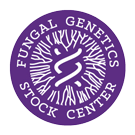Strain: Neurospora crassa
FGSC #2436
Reporting Genes: pi un-15
Species: crassa
Allele: B101 T54M50(t)
Alternate Strain Number: 2146
Depositor: DDP
Linkage Group: IIL IIR
Mating Type: a
Genes

Reporting Genes: pi un-15
Species: crassa
Allele: B101 T54M50(t)
Alternate Strain Number: 2146
Depositor: DDP
Linkage Group: IIL IIR
Mating Type: a
